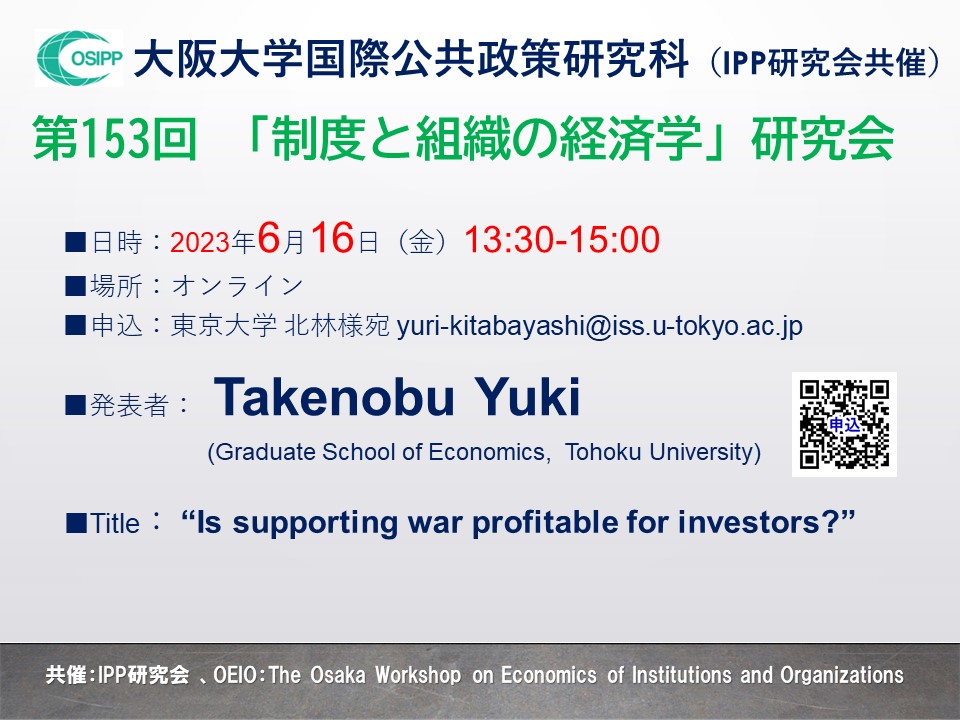
- オンラインあり
- 要申込
第153回「制度と組織の経済学」研究会 (共催:IPP研究会) 開催のお知らせ
対象 |
|
|---|---|
日時 | 2023.6.16 Fri 13:30 - 15:00 |
場所 |
|
申込方法 | メール:yuri-kitabayashi@iss.u-tokyo.ac.jp(東京大学社会科学研究所 北林様宛) |
問合せ | 東京大学社会科学研究所 北林様 |
「制度と組織の経済学」研究会はOEIO(The Osaka Workshop on Economics of Institutions and Organizations:東京大学社会科学研究所と大阪大学IPP研究会による研究会)の主催により、理論研究・実証研究を問わず、ミクロ経済理論、マクロ経済理論、経済史等をテーマに研究しています。 皆様のご参加をお待ちしております。
Presenter: 結城武延 氏(東北大学大学院 経済学研究科)
Title:“ Is supporting war profitable for investors? ” Evidence from Tokyo Stock Exchange during Second Sino-Japanese War and Pacific War
Abstract: In the conduct of war, resources must be allocated to military-related sectors. In World War II, the war was conducted under government control and command economies in many countries. On the other hand, it should be pointed out that in countries where the allocation of resources was mainly conducted by the market, the war was carried out in a manner that did not interfere with market mechanisms as much as possible. In particular, it is pointed out that in Japan, policies were implemented to maintain the functioning of the stock market and to attract funds to the military industry. So, was it also in the interest of investors to invest in and hold stocks related to the conduct of the war? If so, then the war would have been economically beneficial not only to the government but also to the people. Thus, for the parties conducting the war, political pressure to end the war from within would not work, which could increase and prolong the scale of the war. In this paper, we constructed a dataset of daily individual stocks available in the Japanese wartime period. Using that data set, we performed structural change tests to analyze the relationship between wartime events and stock price movements. We also calculated portfolios and analyzed whether the inflow of funds into military stocks was desirable for investors. Furthermore, we compared the results of this estimation with the actual portfolios of life insurance companies, which were leading institutional investors at the time.